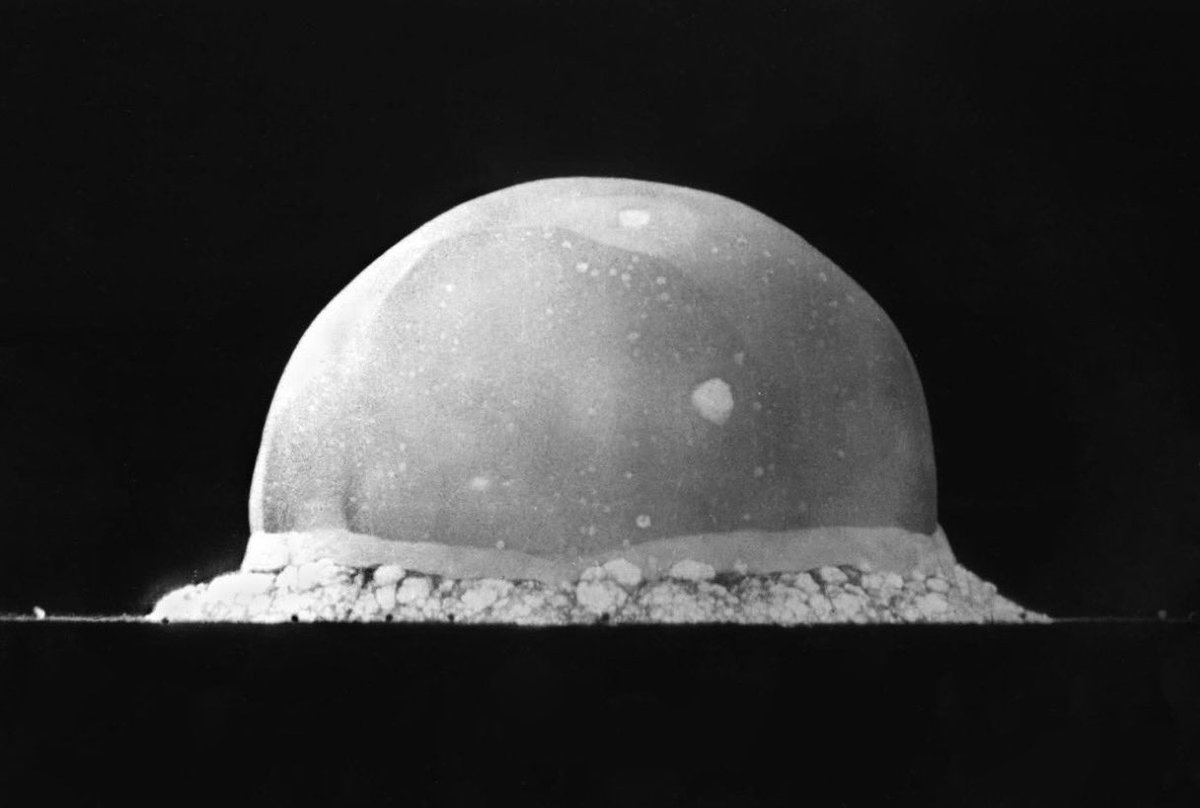Let me tell you a short story about how much a physicist can learn using dimensional analysis and a few pictures of an atom bomb detonation. https://twitter.com/mcnees/status/1283765045395173379">https://twitter.com/mcnees/st...
During WWII a British physicist named Geoffrey Taylor was asked by his government to estimate the yield of the US atomic bomb test. The data was limited — he had Mack’s photos of the Trinity test, and probably Brixner& #39;s famous film of the explosion.
(Credit: Berlyn Brixner/LANL)
(Credit: Berlyn Brixner/LANL)
Taylor figured that the evolution of the shockwave produced by the blast could be well-described using only five quantities: its radius r, the time t since detonation, the energy E released by the blast, and the density ρ and ratio of specific heats C of the surrounding air.
In physics (and all science) the units that we use to describe things are arbitrary. There’s nothing fundamental about a meter, it is just a convenient basis for describing other lengths via quantitative comparison. A foot does the same job for you. So does a furlong.
Nothing about the universe says that meters are better or worse than feet. This means that relationships governing physical quantities should hold regardless of the units we use. We can always express such relationships in a form independent of the choice of units.
Anyway, Taylor identified five quantities that were relevant for the physics of the shockwave produced by the Trinity Test. Each of those quantities could be described in terms of a different combination of just three kinds of units — length, mass, and time.
That meant there were only two combinations of those five quantities that were “dimensionless,” or independent of units. C is already dimensionless, because it’s a ratio of two quantities with the same units.

 Read on Twitter
Read on Twitter





